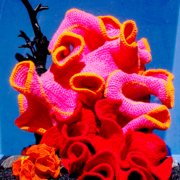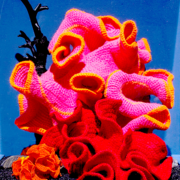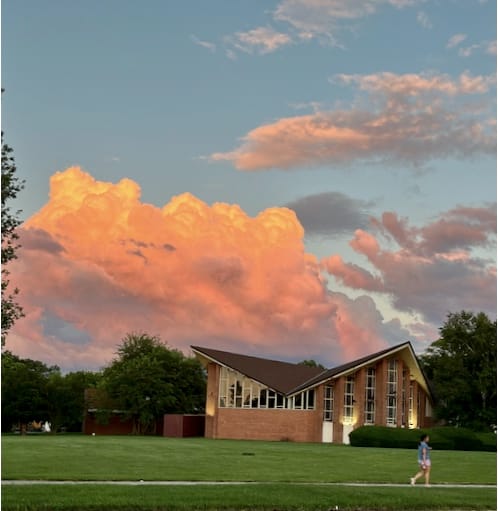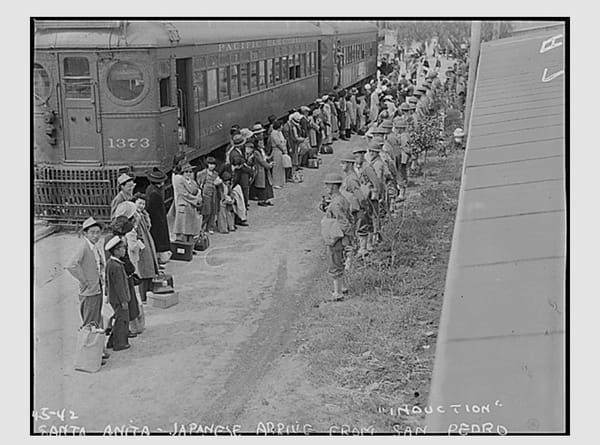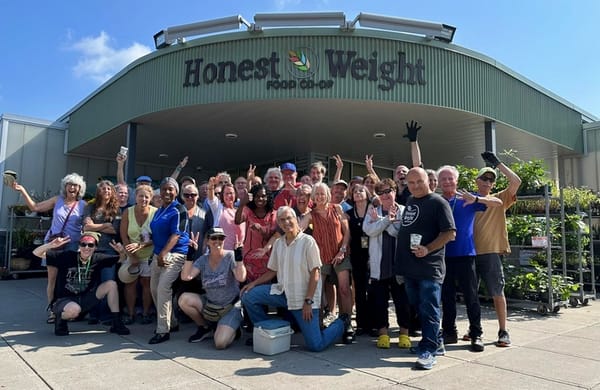Handcrafted Healing
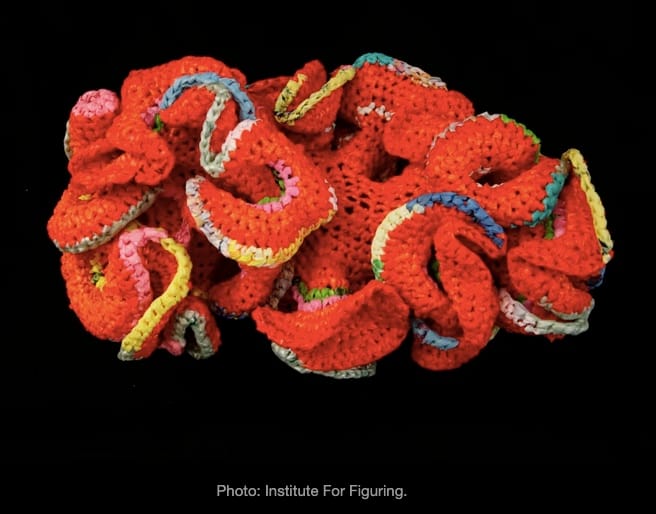
"One of the greatest struggles of our time will be to cultivate a life-affirming political culture that can be enacted in the everyday, a counterculture of rebellious care." Kelly Hayes & Mariame Kaba, Let This Radicalize You
It is easy to despair when we focus on the avarice, cruelty, and incompetence of a life-destroying political culture. The autocratic playbook is, in fact, designed to produce this effect: to make us succumb, to cause us to give up and give in.
This means caring is itself an act of resistance. Rebellious care is also regenerative, and we're going to need that in the days ahead. In times like these—especially faced with an intensified campaign of lies and "artificial" content—we can draw energy and inspiration from the heartfelt work of many human hands. As an ancient form of human artifice, handcraft can connect us with other people and with our lineage of creativity and care. As Susan Tallman reminds us:
"People like playing with string. The wheel gets more press as an invention, but the loom predated it by millennia; the Paleolithic humans who hunted mammoths also tied nets. My great-grandmother tatted, my grandmother embroidered, my mother had a fling with macramé, my generation knits. Meanwhile the menfolk were busy braiding leather, splicing rope, and mastering clove hitches. Some of this effort kept our heads from freezing and our sails from luffing, but much was clearly surplus to requirement."
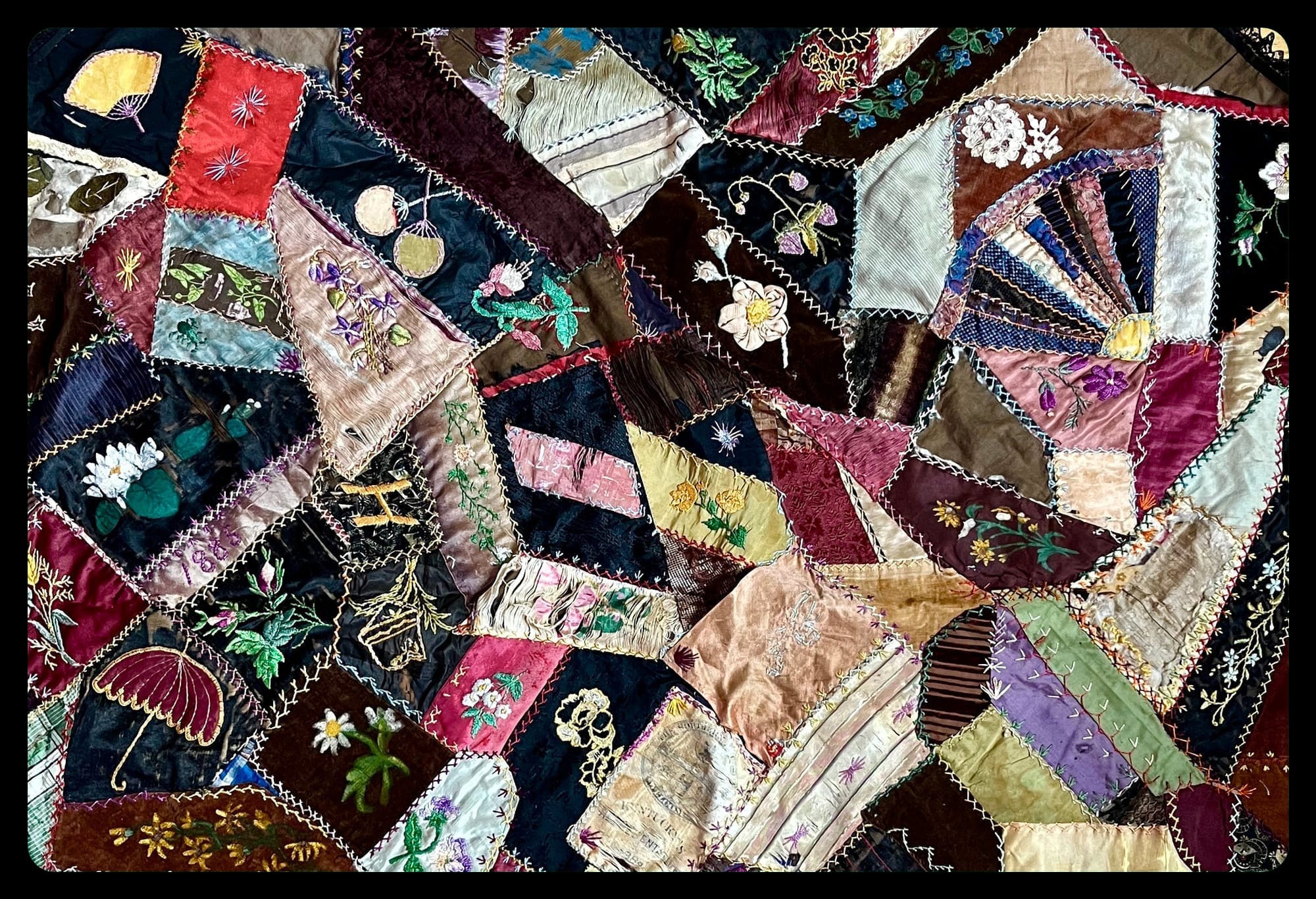
My mother quilted. Her grandmother painted china and embroidered, as well as playfully combining these forms of handiwork on her crazy quilt. I knit and weave. My great-grandmother's quilt exemplifies the "surplus" Tallman refers to—how it may take the form of celebrating hard-won skills, preserving favorite garments, memorializing special moments, and using art to honor natural beauty.
Such handcrafts illustrate care: care for and attention to our sensory experiences and perceptions, for our surroundings and community, and for our survival in common with our more-than-human companions and fellow travelers.
I love the way Tallman articulates the profound capacities of works in fiber:
"And though fabric lacks the staying power of stone, enough has survived the centuries to show that textiles around the globe have acted as votive containers, social signifiers, carriers of memory and belief—instruments for making ourselves and our surroundings more beautiful and cosmologically attuned."
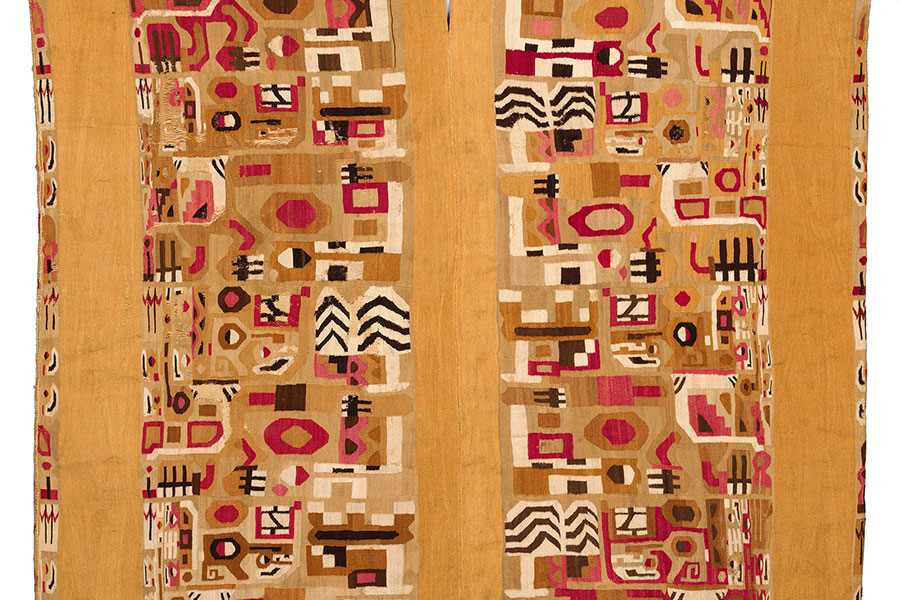
I am deeply committed to lifting up these "instruments."
I believe in their power, though long dismissed as "mere craft" and "women's work." In fact, the historic tendency to devalue them, to relegate them to an insignificant sphere, suggests the actual threat they present to the autocratic playbook. They are life-affirming. They embody that which is "surplus to requirement" in the marketplace—the untallied expressions of rebellious care without which functioning societies cannot survive.
In case you missed them, here's a collection of my previous essays which spotlight books, projects, or people involved with handcraft and craftivism:
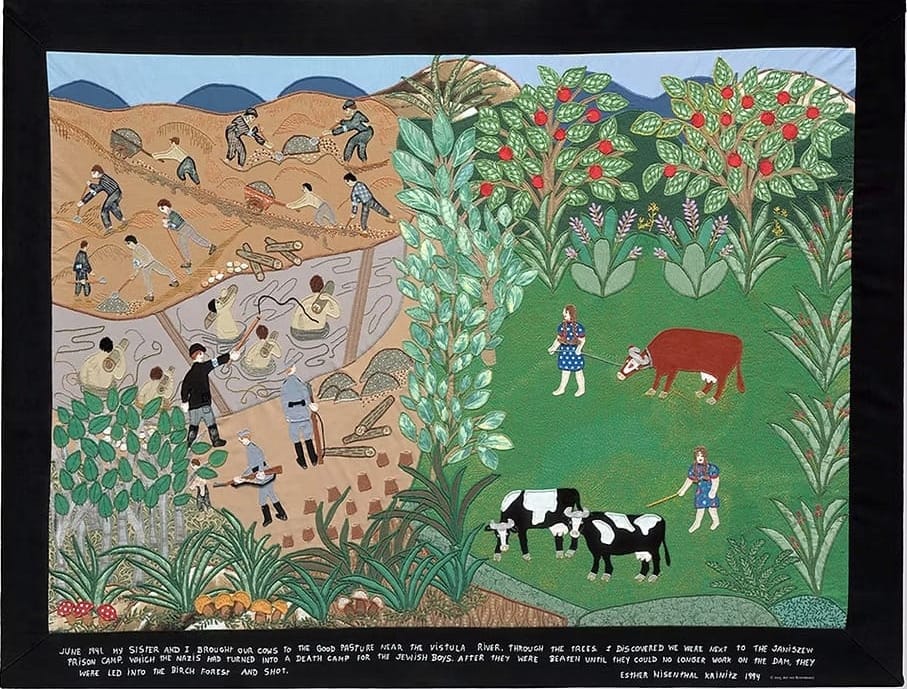
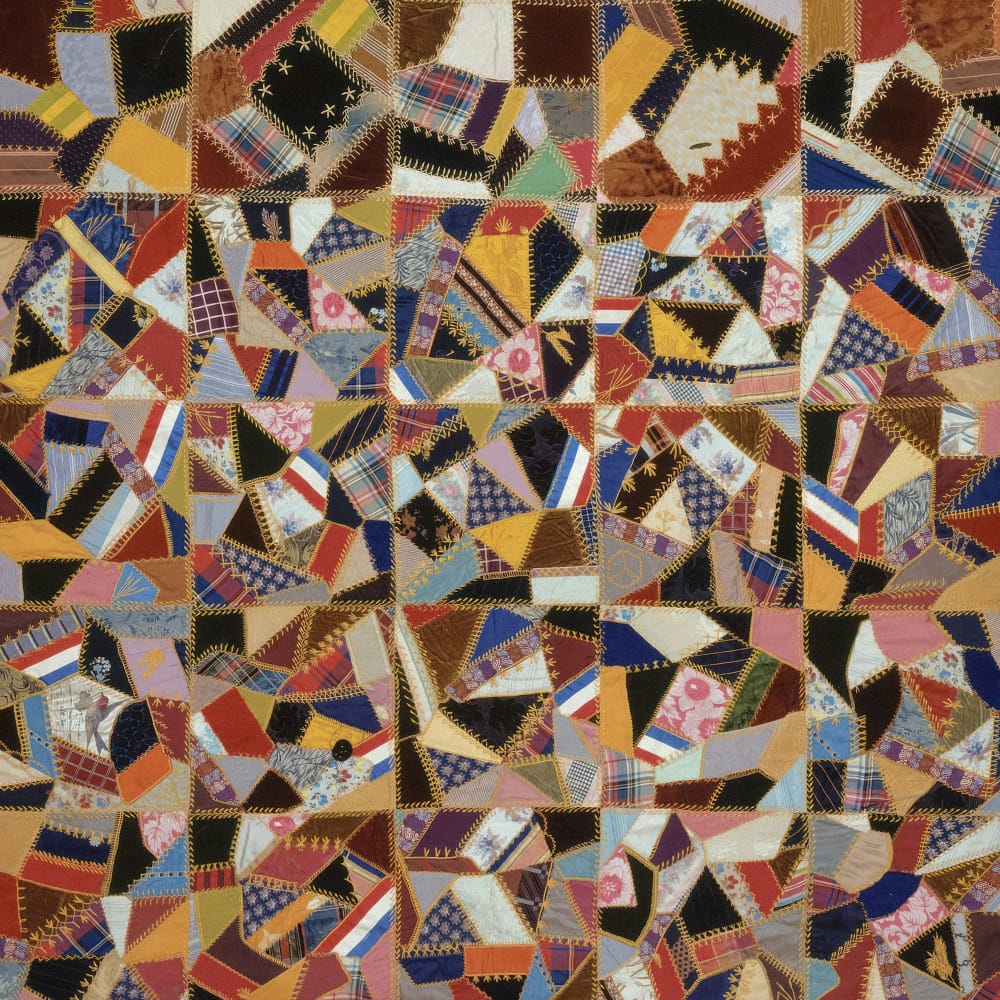
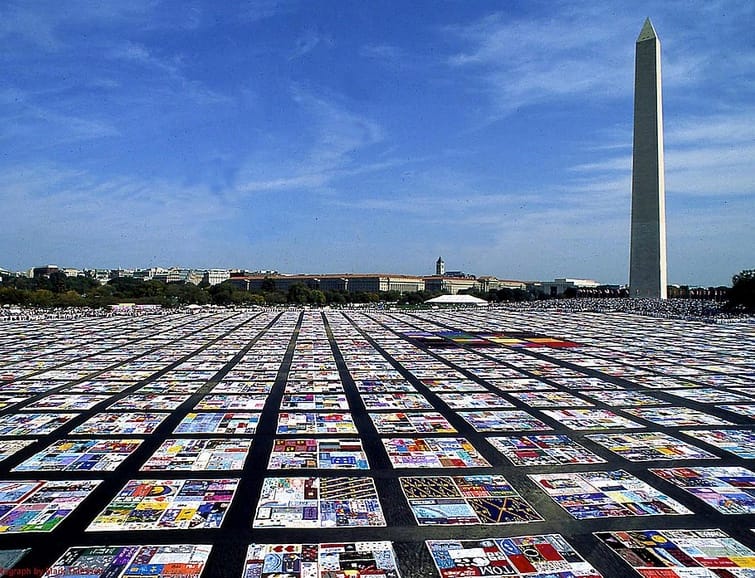
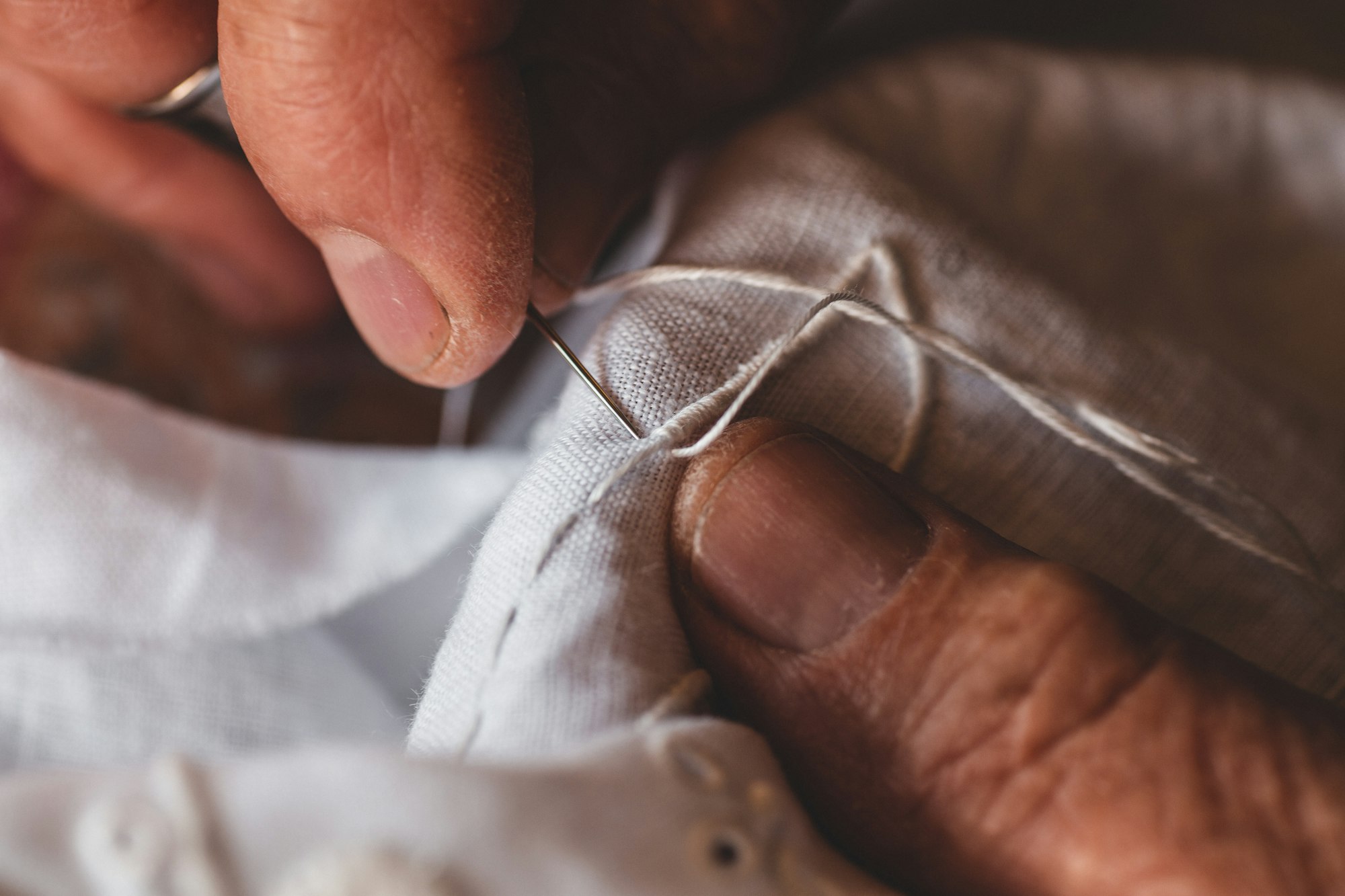
This week I want to highlight a project that has been going strong since 2005, when Australian twin sisters, Christine and Margaret Wertheim became concerned about the plight of coral reefs. They put out a call for help in what they describe as their "quixotic project at the intersection of handicraft, mathematics and environmentalism.” People responded in a big way, with crafters, designers, computer coders, and children participating. The project morphed, starting from one "core" reef and exhibitions, and then spawning many more "satellite reefs." The Wertheims describe their vision of what these reefs mean,
"These crochet reefs are time-laden rejoinders to a culture of doom, quietly asserting, in what Donna Haraway has called this “time of response-ability,” a message of hope. What can we humans do when we work together, not ignoring ecological problems but also not capitulating to fantasies that rescue is around the corner from some sudden technological solution.
These reefs are militantly un-tech. There are no microchips or bit-streams involved. And yet there is technology here, for the crochet hook and its myriad cousins – knitting needles and fishing net hooks among them – are some of humanity’s oldest, most critical technes. By insisting on the value of the hand-made, the Crochet Coral Reef project makes a claim about history and the importance of material labor to prospects for human survival."
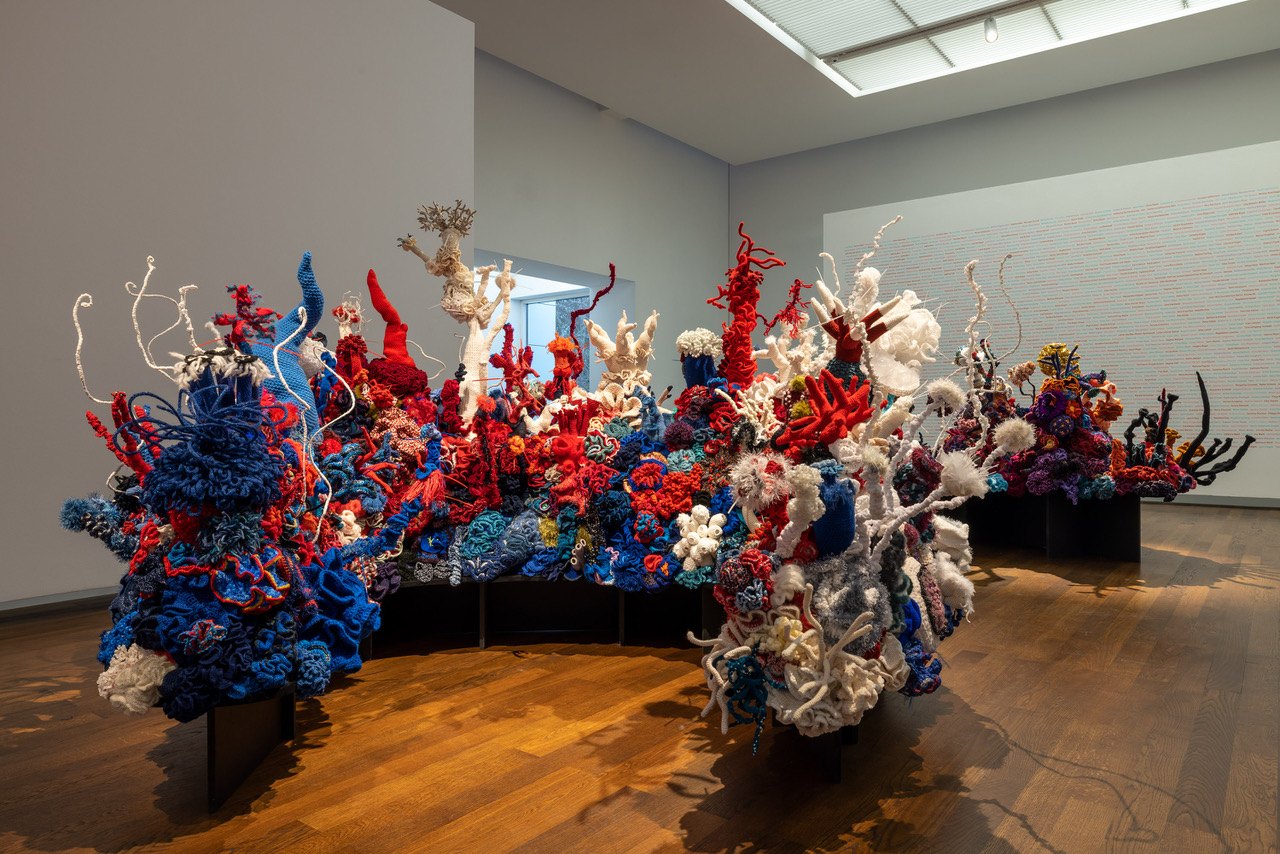
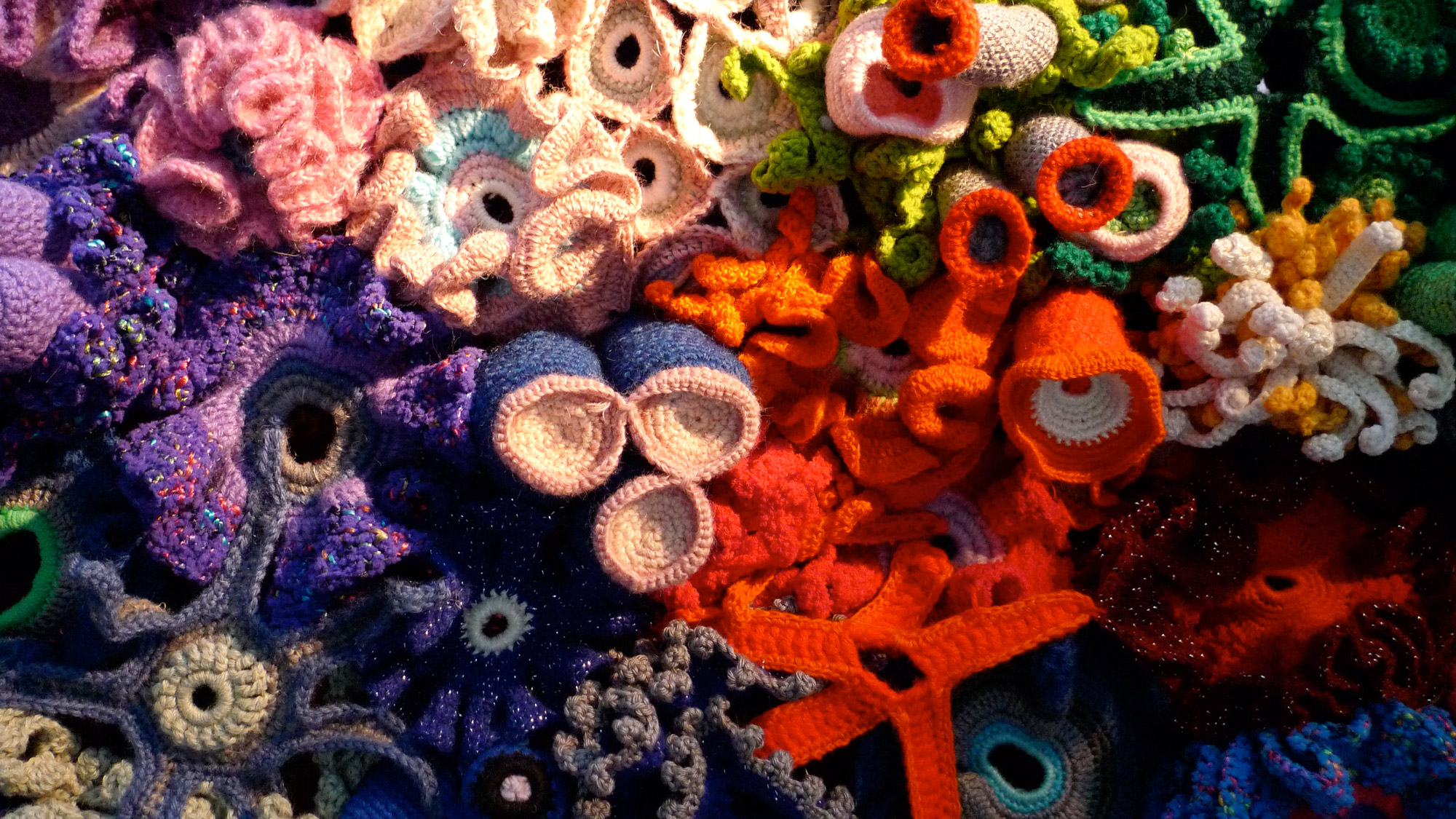
With over 50 satellite reefs (and more in progress) and over 20,000 participants across the globe, this project is also working to promote excitement around scientific understanding, and yes, math! Their organization is, after all, named the Institute for Figuring. Here is a shot from their site that lays out this premise better than I can:
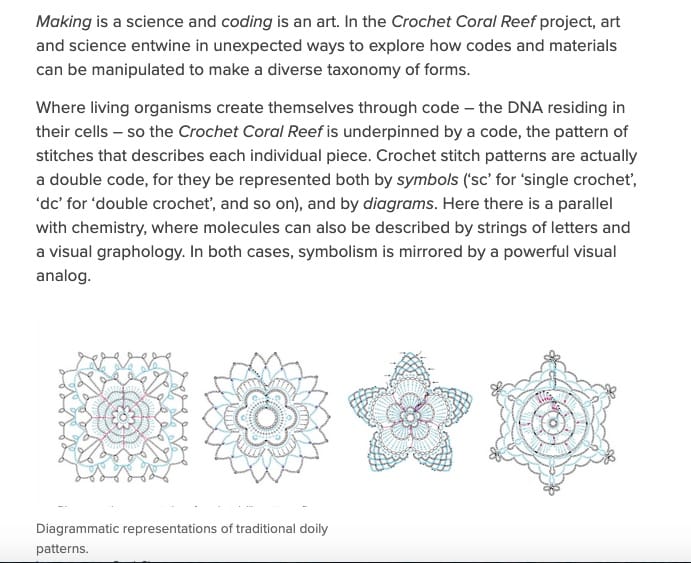
You can watch Margaret explain the mathematical concepts in her Tedtalk:

But don't worry if you still don't understand hyperbolic planes once you've watched her presentation. Just jump in, and try working from the patterns themselves. You'll gain many new insights as you feel the forms take shape in your hands.
I haven't crocheted before, and I found these video instructions helpful:
After watching, and following along with a few stops and starts, I got the hang of it pretty quickly.
Then I moved on to this more in-depth set of written instructions. It will get you playing with cool coral shapes in no time: https://cdn.filepicker.io/api/file/YzJam4EYQAKJlL3sNcW
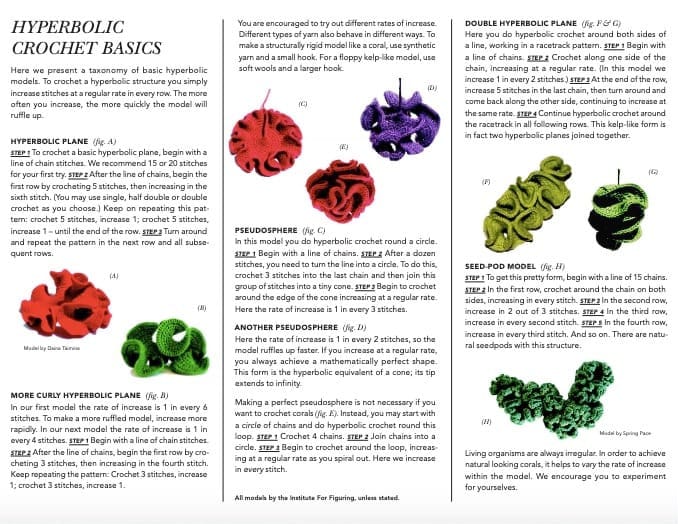
And there's a new reef forming in my region, at Williams College, complete with instructional workshops and weekly meetups to help bring new folks on board. Find out more here: https://artmuseum.williams.edu/berkshires-satellite-reef/






